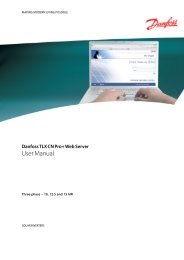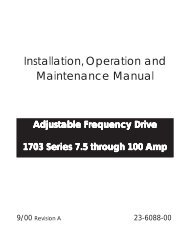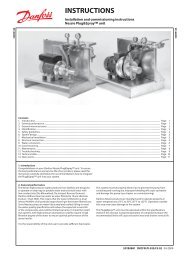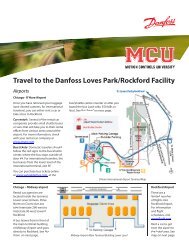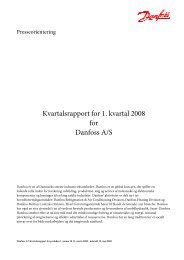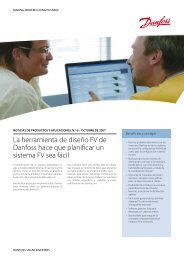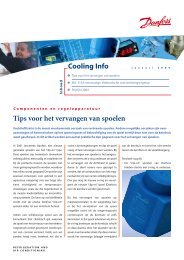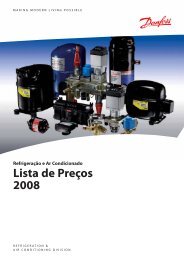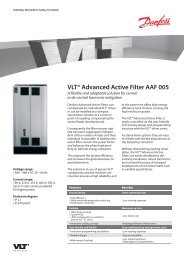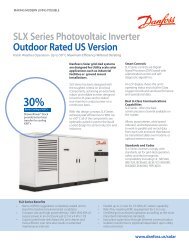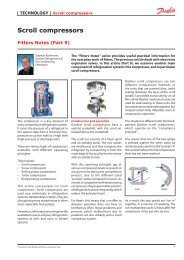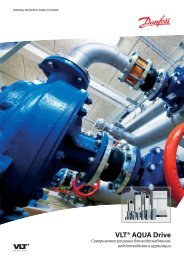Why Compressors Fail Why Compressors Fail - Danfoss
Why Compressors Fail Why Compressors Fail - Danfoss
Why Compressors Fail Why Compressors Fail - Danfoss
Create successful ePaper yourself
Turn your PDF publications into a flip-book with our unique Google optimized e-Paper software.
Document Field Service Category Note <strong>Why</strong> Document <strong>Compressors</strong> title <strong>Fail</strong> : Part 2 - Flooded Starts<br />
Here we see the type of damage possible with larger more powerful compressors.<br />
Due to the fl ash off of liquid refrigerant washing lubrication from the bearings<br />
when seizure of the con rod on the crankshaft occurs the motor continues to spin<br />
breaking the con rod. The broken con rod often smash into the piston causing<br />
further damage.<br />
spin, the soft aluminium con rods are snapped and<br />
the broken rods then often smash into the pistons<br />
causing a total compressor smash up. These<br />
metallic particles can be thrown around inside the<br />
machine and can damage the motor insulation and<br />
cause a spot burn or total motor burn out.<br />
Flooded starts can often be simply diagnosed by<br />
high oil levels seen in the oil level sight glass, and<br />
during the start up mode the oil is seen to foam<br />
sometimes for only a few seconds, sometimes for a<br />
few minutes. The longer the foaming lasts, the<br />
more wear and damage is taking place. Engineers<br />
can easily diagnose these signs of Flood back<br />
problems, but the compressor failures can often be<br />
mistaken for Liquid Flood back or Flooded Starts<br />
as the failed components often look very similar under inspection.<br />
In extreme migration cases, this oil rich / liquid froth mixture can spill<br />
up and over into the suction gallery and into the cylinders through<br />
the suction valves. This mixture is partially Non-Compressible and<br />
often causes the suction valves to break, which can lead to broken<br />
piston crowns and damaged discharge valves and head gaskets.<br />
In these extreme cases the cause is deemed as Liquid Slugging (See<br />
Liquid Slugging )<br />
Typical Causes of Flooded Start<br />
1) System Overcharge<br />
2) Crankcase Temperature lower than Evaporator<br />
3) Long Off Cycle times<br />
4) Compressor sited in a cold windy environment<br />
5) Crankcase heater faulty/or of insuffi cient power to achieve required<br />
oil temperature.<br />
6) A, one time pump down control<br />
7) Leaky solenoid valve<br />
Lit. no.<br />
The damage to the discharge valves, in this picture, is due<br />
to ‘Liquid Slugging’. The mixture of oil and liquid is<br />
partially non-compressible and results in broken and<br />
pitted discharge valves and even broken piston crowns.<br />
Field Service Note 007 3




